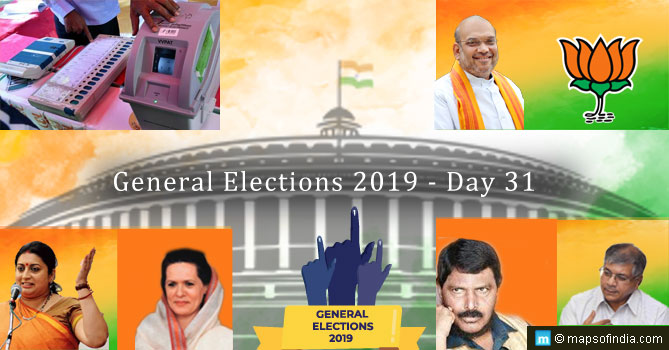The Indo – China war of 1962
India shares a border of a substantial 3488 kilometers with China, which can be subdivided into three sectors:
- Western Sector: This refers to the border shared by Jammu and Kashmir, Xinjiang and Tibet. As per the claims of Indian Government China is illegally occupying an area 43,000 sq km in this sector
- Central Sector: This refers to the border shared by Himachal Pradesh and Uttrakhand with Tibet
- Eastern Sector: This is the sector where the Indian Sovereignty is challenged by China over an area of 90,000sq km. This area falls mostly in Arunachal Pradesh, Bum La, Lo La, Asaphi La and Tawang which incidentally happens to be the most sensitive area.
When the whole world was transfixed with the Mexican standoff between the nuclear armed USA and the erstwhile USSR in Cuba, China had attacked India on October 20th, 1962. Triggered by the Tibet issue and the border disputes between the two countries, in the brief war that ensued, China had emerged victorious who had also called the official ceasefire.
Circumstances in India leading to the Indo – China war:
The recipe for the war between India and China was ready as early as 1959 when India had stumbled upon the disputed highway between Sinkiang and Tibet, constructed by the Chinese, which had cut through the India occupied regions of Aksai Chin. China had basically encroached in the unmanned Aksai Chin zone of India to construct the said highway, which was of considerable military significance to the Chinese. As a countermeasure to this Chinese incursion, Nehru, the then Prime Minister of India, had held a prolonged discussion with Lieutenant General B M Kaul ‘to do something’ about the Chinese incursions. Such discussions had translated into the implementation of a ‘forward policy’ by the Indian Government. The said ‘forward policy’ was the militarily and strategically unreasonable decision on the part of the Government of deploying small posts manned by five to 10 soldiers in the Indian areas, that had been forcibly claimed by the Chinese through the construction of the highway. When such decisions of the Indian Government had led to the inevitable instances of armed violence between the two sides, the army command was shaken out of its reverie. What had followed was a round table in the military, code – named ‘Sheel’ on October 15 and 16, 1960, (a full two years before the actual outbreak of the Sino – Indian war), which as we shall see proved to be more catastrophic than the forward post decisions and had ultimately fulminated in a war between the two countries.
The expert estimations of the military had evaluated the necessity of at least seven battalions, and had also underlined that, if such battalions were to be sourced from the Pakistan border then supporting battalions had to be deployed. However, the premonitions of the army had been completely brushed off by the Government with the eventual demurral to raise more troops. An order was given to the army to deploy the troops as planned. While the border issues had continued to deteriorate, the Western Command in a written communication to the Army Headquarters on August 15th, 1962 had informed that, keeping in mind the superincumbent military border capabilities of the Chinese, it would be prudent not to engage them in any form conflict. However, the Army Headquarters had dubbed the ‘forward policy’ as successful backing it by the reason that such policies had effectively thwarted the Chinese army. Such conclusions of the headquarters had come only a month before the actual war had broken out. The specific instruction from the headquarters had been, “We must show our flag”.
Meanwhile, Nehru was attracting much flak from the Opposition for his non-viable border policies, but he was determined to mobilize the army into action. So enter General Kaul, an eager beaver for an ambitious military career, with perhaps aspirations of succeeding Nehru. General Kaul had come up with this fantastic and ludicrous action plan of launching an offensive against the Chinese in the eastern sector, a distance of 1000 kilometers from Ladakh. Considering the logistics, if the army situations in Ladakh had been inadequate, then the condition of the army in the eastern sector was deplorable. This had led to the priming of the eastern sector by India. The Army Headquarters, of course, had no inkling of the extremely meager practical situations of the army in the eastern sector. Despite the repeated pleas of Lieutenant Colonel Eric Vas (in charge of the first battalion deployed in the Tawang region) highlighting the shortcomings of the troops in the said region and describing profound shortage of everything starting from ammunition to clothing and even stationeries, had fallen upon the deaf ears of the Government. Vas had even resorted to dramatic gestures, such as writing a letter on a ‘Chapati’, to highlight the acute shortage of even stationery, but the Government did not really care and had removed Vas from his post.
Amidst a tumultuous political situation marked by a tussle between Nehru’s anti – west views and a faction of the Opposition advocating alignment with the US led Western Camp, the completion of the third Loksabha elections, Joint Secretary in the Ministry of Defense, H C Sarin on September 22nd, 1962, jittered by an attack of the Chinese troops on an Indian patrol in the eastern sector, had finally issued the war directive thus sealing the fate. To quote a Government obsessed with losing a lost war, “The decision throughout has been as discussed earlier that the Army should prepare and throw out the Chinese as soon as possible”.
While the Henderson Brooks Report pertains to the military details of the Indo – China war, there is a definite indication of the existence of a faction within the enclaves of the Indian Government that had been keen to initiate a conflict between India and China. While the then Prime Minister of India Jawharlal Nehru and the then Defence Minister V K Krishna Menon are chiefly accused of fuelling the conflict with China, there had been people like the Intelligence Bureau Chief B N Mullick who had left no stone unturned to provoke a retaliation from China. It is absolutely justified that Nehru should take the fall for the Indo – China war because, it had been the Nehru Government who were responsible for deploying severely underequipped and inept Indian troops to the frontline of the battle ground of the Indo – China war. The war had claimed the lives of 4000 Indian soldiers, half of which can be attributed to the harsh Himalayan weather conditions with temperatures hovering in the lows of as much as minus forty degree centigrade. The troops had been acutely underprepared for a war in the Himalayas. A simple instance will make the situations even more clear. The Indian troops were armed with the vintage Lee Enfield bolt action rifles, a throwback of the First World War, and in that terrible cold the soldiers had to operate the metal bolt of the rifle with bare hands. More than 2000 soldiers had fallen prey to pernios, chilblains, frostbites and other disfigurements of human appendages caused by extremely low temperature conditions resulting in numerous cases of subsequent amputations of the hands. Even an emergency ration of chocolates was denied to the Indian troops, which was then an elitist commodity.
It was a wrong war for India at a wrong place and definitely at the wrong time. Besides, the Government had been oblivious of a thumb rule of war, ‘if you are in a wrong war at least bring the right weapons’, which further underlines how the Nehru Government had treated the Indian troops deployed at the border to fight the Chinese as absolute expendables. However, the fact remains that Nehru was not unaware of the Chinese threat. It is simply that the Cuban Missile situation had left USA indisposed and so the crucial help from the US that Nehru had been so heavily banking upon was not there in the time of the actual crisis. In fact, evidences indicate that, China had intentionally picked the time to sort out the border issues with India, confident that an US intervention will be impossible with the concurrent Cuban Missile Crisis. Besides, China had been methodically preparing for the war which India had misinterpreted as the ‘forward policy’ in action, refraining the Chinese from attacking.
The Tibet and the Dalai Lama factor:
If the Aksai Chin border dispute was one of the major reasons for the Indo – China war, then the Dalai Lama factor was also responsible for the conflict even if in a smaller scale. The Tibet issue had started to beleaguer the Sino – Indian relationship much before China had attacked India. While China arraigned India for attenuating its influences in Tibet, India had blamed China for intervening with the autonomous functions of Tibet. The war had further endorsed such accusations with both strategic and tactical implications. The act of India granting asylum to Dalai Lama, whose existence in India was made further irrevocable by the outbreak of the war, proved to be a consistent stress on the Sino – Indian relations and a manifestation of further uncertainty pertaining to the Tibet issue. India granting refuge to the Dalai Lama Government was a direct challenge to the Chinese authorities in Tibet, which was also instrumental in precipitating the war between the two countries.
Conclusion:
53 years had gone by, yet the consequences of the Indo – China war continues to plague the bilateral relations between the two countries. Despite several efforts to iron out the wrinkles in the relation between the two neighboring countries, China continues to pursue an aggressive behavior as far as the border issues are concerned. While China has moved ahead of India in many aspects, including the creation of an internationally reckoned superb army, India remains weak kneed towards its China policies. The dubbing of Arunachal Pradesh as South Tibet, the recent incursion bids…….everything indicates that China has not lost its trigger itch even after 53 years of the Indo – China war!




